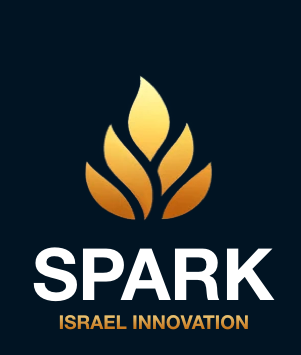The Spark Blog
Analysis and Key Trends in RAG - a Detailed Report

Initial Enthusiasm: RAG’s Rise as the “Go-To” Solution
Executive Summary
In the last six months, retrieval-augmented generation (RAG) has transitioned from a highly promising AI enhancement to a solution facing critical scrutiny. While it initially gained traction for its ability to integrate real-time, domain-specific data without extensive fine-tuning, large-scale implementations have revealed several challenges. Enterprises are now reassessing RAG’s viability and exploring alternatives.
- Initial Excitement vs. Real-World Challenges: Early enthusiasm around RAG stemmed from its potential to enhance AI applications with up-to-date, external knowledge. However, issues such as redundant retrieval, scaling inefficiencies, and high maintenance costs have become apparent.
- Duplication and Redundancy: RAG often retrieves overlapping or repetitive data, reducing the uniqueness and quality of AI-generated responses.
- Scalability Concerns: While RAG functions well in controlled environments, its performance degrades as document repositories grow, leading to slow response times and diminished accuracy.
- High Maintenance Costs: Keeping RAG pipelines updated requires frequent vector database re-indexing, which is both computationally expensive and operationally complex.
- Challenges with Rapidly Changing Data: Many industries require AI that reflects real-time changes, but RAG’s dependency on vector-based indexing results in stale or outdated responses unless updated frequently.
- Emerging Alternatives: The industry is shifting toward hybrid retrieval approaches, graph-based retrieval, and cache-augmented generation to mitigate RAG’s shortcomings.
Is RAG dead?
No, but it is useful for limited use cases and should not be seen as a universal solution. Successful AI strategies will incorporate RAG selectively while leveraging complementary technologies to balance cost, efficiency, and performance.
Detailed Report
he Rise of RAG and Early Adoption
Over the past six months, retrieval-augmented generation has seen widespread adoption as a means to enhance AI capabilities by injecting real-time, proprietary data into responses. Organizations viewed RAG as a way to avoid costly fine-tuning while still ensuring AI models produced relevant, domain-specific outputs. The appeal was clear: leverage external data sources dynamically without retraining models, making AI more adaptable to evolving business environments.
RAG was rapidly deployed in various industries, including legal, finance, and healthcare, to create AI-powered assistants, search tools, and automated reporting systems. The initial proof-of-concept stages demonstrated strong results, fueling expectations that RAG could be a foundational component of enterprise AI architectures.
However, as deployments moved from controlled pilots to production environments, critical issues surfaced that tempered the initial excitement.
Key Challenges and Limitations
1. Duplication and Redundant Data Retrieval
A major challenge in RAG implementations has been the retrieval of redundant or overlapping information. Many organizations found that their AI systems frequently surfaced repetitive responses due to duplicated content in source documents. This issue undermined the quality and uniqueness of AI-generated outputs, leading to a need for improved data curation and retrieval refinement.
Without rigorous data governance, RAG models can amplify inconsistencies in datasets, making responses less insightful. This has forced organizations to rethink their data preprocessing pipelines to ensure higher retrieval precision.
2. Scalability and Performance Bottlenecks
While RAG performs well with small- to medium-sized document collections, its effectiveness diminishes as the dataset grows. Scaling a RAG pipeline introduces new challenges:
- Declining Retrieval Precision: As more data is indexed, vector search can return semantically similar yet irrelevant results, reducing answer accuracy.
- Slower Response Times: Increased document volume leads to longer search and ranking times, frustrating end-users.
- Increased Storage and Compute Costs: Larger vector databases require more infrastructure, raising operational expenses.
- Organizations scaling RAG often find themselves investing in additional engineering efforts, such as fine-tuning vector search algorithms, implementing metadata filtering, or adopting hybrid retrieval techniques to mitigate these issues.
3. High Maintenance Costs
A persistent issue with RAG is its dependency on up-to-date vector embeddings, which requires frequent reprocessing of documents to maintain accuracy. The cost implications include:
- Computational Overhead: Running embedding models at scale is resource-intensive, often requiring dedicated GPU or TPU resources.
- Frequent Index Rebuilding: Many vector databases require full re-indexing when content updates, leading to system downtime and higher storage requirements.
- Operational Complexity: Managing the ingestion, chunking, and indexing of new data adds to the ongoing maintenance burden.
- These factors have led many enterprises to reconsider the total cost of ownership of RAG solutions, particularly when dealing with rapidly evolving data sources.
4. Real-Time Data Limitations
Many industries require AI solutions that reflect constantly changing data, such as financial markets, legal updates, or healthcare records. However, RAG’s reliance on precomputed vector representations means it struggles to keep up with real-time changes. If the system is not updated frequently, responses become outdated, diminishing the reliability of AI outputs.
While some organizations have attempted to increase vector database update frequencies, this leads to further performance bottlenecks and cost escalations. The need for near-instantaneous updates has highlighted RAG’s shortcomings in environments that demand real-time adaptability.
Emerging Alternatives and Adaptations
To address these limitations, AI researchers and industry leaders are exploring alternative approaches that improve upon RAG’s weaknesses:
1. Hybrid Retrieval (Vector + Keyword Search)
By integrating traditional keyword search with vector-based search, organizations can improve retrieval accuracy while reducing the risk of irrelevant results. Hybrid retrieval allows for:
- Better Precision: Combining semantic and lexical matching leads to higher-quality responses.
- Improved Speed: Keyword filtering can narrow search scope, making retrieval faster.
This approach is gaining traction as enterprises seek more reliable AI-assisted search capabilities.
2. Graph-Based Retrieval (GraphRAG)
Instead of relying purely on vector embeddings, graph-based retrieval structures knowledge in a graph format, capturing relationships between entities. This method:
- Enhances Logical Querying: Ideal for multi-hop reasoning and connected knowledge domains.
- Enables Incremental Updates: Changes can be made at a node level, reducing the need for full re-indexing.
-
GraphRAG is particularly useful for industries that rely on structured knowledge, such as law and medicine.
3. Cache-Augmented Generation (CAG)
For scenarios where data is relatively stable, pre-loading knowledge into model context eliminates the need for on-the-fly retrieval. This method:
- Reduces Latency: Cached responses are faster than live retrieval.
- Cuts Costs: Avoids repeated vector database queries.
Cache-Augmented Generation is being explored as a lightweight alternative for use cases where knowledge updates infrequently.
Conclusion
Is RAG dead?
No, but it is useful for limited use cases and should not be seen as a universal solution. While RAG remains a valuable tool for injecting external knowledge into AI models, its limitations in scalability, cost, and real-time adaptability mean it cannot serve as a one-size-fits-all solution.
Enterprises must evaluate RAG’s role within a broader AI architecture that incorporates hybrid search, structured knowledge representations, and model fine-tuning to achieve optimal performance. The key to successful AI deployments is not relying solely on RAG but integrating it strategically where it delivers clear benefits.



